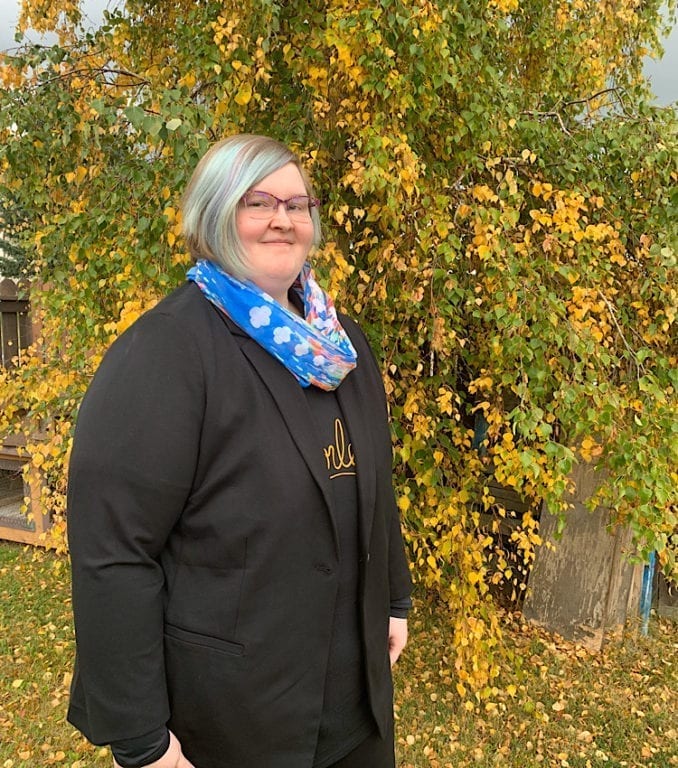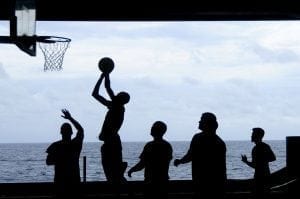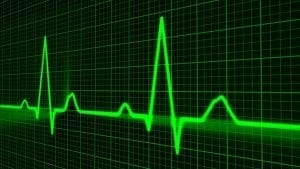When I was 12 years old, following my mom’s sudden cardiac arrests, I was diagnosed with a rare, genetic sudden arrhythmia death syndrome called Congenital Long QT Syndrome Type 5. My aunt was also a survivor of cardiac arrest from Long QT before she eventually died from the disease a few days before Christmas in 2017.
In October 2017, when I was 17 years old, I met the top doctor on my condition at a conference who told me I required a radical change in my treatment plan or I would die in five years. That plan, included, in part, having Left Cardiac Sympathetic Denervation surgery and a dual chamber ICD/pacemaker implanted. What followed was eight months of waiting, denials, and hoping that my request for out of country funding to be sent to the United States from Canada would be approved. One day in April, that wish was granted. Before I left home, I promised myself no matter what happened I would never allow myself to regret the decision to have these surgeries because the alternative was death. There was nothing else I could have chosen. This is something I now struggle with. How can I regret something that allows me to stay alive?
In June of 2018, I flew from my home of Alberta, Canada to the US to have both surgeries performed. The hospital I travelled to had the most experience in LCSD by far. With that being said, I was around their 140th LCSD patient. Within 24 hours, I had both my LCSD performed and my ICD implanted. The whole experience was a whirlwind. For the first four days after my surgeries, I felt great considering everything I had been through. I felt well enough to meet the first other family we had encountered with Long QT type 5, the type of Long QT my family has, in person shortly after I was released from the hospital.
Immediately after my surgery, I noticed minor side effects that were not and still aren’t a big deal. They may be a little strange but they do not impact my life much. I do not sweat at all on my upper left side. I have harlequin facial flushing where the right half of my face will turn bright red and the left stays my regular shade of pale like a straight line down my face. My left eye gets droopy sometimes (especially when I am tired) and my pupils are different sizes. I have difficulty regulating my own body temperature and my left and right sides are different temperatures. I sweat excessively on my right side to make up for the lack of sweating on my left. I also have incredibly dry skin on my left. The running joke in my family is that I may as well take out stock in lotion these days. I put a glove over lotion on my hand before bed at night. While these side effects may be occasionally annoying, they do not impact my quality of life. They just make me unique.
The day I flew home, four days after my LCSD surgery, everything changed. I went from having the least amount of pain I can consciously ever remember having in my life to being in excruciating, debilitating pain on the upper left part of my back and all the way down my left arm. It felt simultaneously like being burned, electrocuted, and stabbed. It was the worst pain I had ever felt and I have had aseptic meningitis 3 times. It was also truly unlike any other pain I had ever experienced. I have had chronic pain to some degree my entire life. I cannot ever remember a time I was not in pain. However, that pain is severe, chronic joint pain which I am used to from my Hypermobile Ehlers-Danlos Syndrome. This was nothing like that. I found out that after my surgery I had a paravertebral catheter of lidocaine (a type of nerve block). When it wore off, that is when my new pain started.
After arriving home while my wounds were healing, I would sometimes have to get up to look in the mirror to check to make sure there wasn’t cold liquid running down the left side of my back. The sensation was so realistic I was sure I was going to end up with frostbite. Alas, there was no cold liquid. We called the hospital that did the surgery who confirmed that despite the gabapentin I had been placed on prior to the surgery and continued taking post-op, I was experiencing the rare complication from LCSD of severe nerve pain. I was devastated. Truly devastated. I had this surgery to save my life and now I was in a worse place health-wise than I was prior to the surgery. It is something I still struggle to understand.
I enquired prior to my LCSD about the possibility of nerve pain. At the time, my doctor at home reassured me the chances of that happening were so slim I shouldn’t even pay the possibility another thought. At the hospital in the US, I was reassured again that the chances of nerve pain were slim. Something I later learned after I developed the nerve pain was that if you have pre-existing chronic pain prior to the LCSD surgery, which I did, then your risk of nerve pain is greatly increased. I wish I had known that prior to the surgery. I cannot say if it would have changed anything but at least I would have known. To me, information is power and I had never felt so powerless in my life. All it took was a couple hours of surgery to destroy my quality of life.
At first, my dose of gabapentin was increased. Then we switched to Lyrica. That was increased, and increased, and increased again until I was at nearly the maximum daily dose you can safely take of the medication and yet I was still in severe pain. Everything we could get our hands on over the counter was tried. Advil. Tylenol. Naproxen. Robax Platinum. Aspirin. Ice. Heat. Lidocaine cream. Capsaicin cream. We went the route of less traditional methods and tried Arnica and CBD oil. I even had an awesome friend from California mail me up some lidocaine patches (that the hospital in the US recommended we try, but are not available in Canada). They helped a little. I also tried physiotherapy and massage therapy. However, nothing worked in any substantial way.
I became trapped between the American and Canadian medical systems. Returning to the hospital in the US in person is unfortunately not an option. So, they would suggest something, the doctors in Canada would ignore it or counter it, and so on the process would go while I was left in limbo with no real progress ever being made.
Weeks turned to months. I was referred from my paediatric pain team who knew me for years to an adult pain clinic as I had turned 18 weeks after my surgery. They eventually performed an intercostal nerve block nearly a year after my surgery. That caused the pain to worsen. Here I was yet again with something that was supposed to help me leading to a rare complication and actually making things worse. The pain clinic then refused to perform any further interventions as they deemed the risk too high.
Months quickly turned into a year. I spent my one year anniversary, fittingly, at heart camp in Virginia and then with my wonderful extended heart family, who have Long QT like me, after camp ended. As the months passed, I constantly faced the question from well-meaning people; “Why aren’t you better?”. Or people telling me they were sure I was supposed to be better now. To be fair, I was. At least so I thought. I never imagined a year prior that my life would be like this.
I truly have never felt so alone in my life. In Canada, none of my doctors (outside of cardiology) even know what LCSD is. I am the only patient at my entire Cardiac Device Clinic and the only one my electrophysiologist (cardiologist) has ever seen who has had LCSD. The hospital in the US has officially labeled me the only case they’ve ever seen of LCSD surgery leading to this severity and longevity of nerve pain. Even in patient communities, I feel alone. I am the rare among the rare. The burden of treatment I face is high. Although my story may not be the happiest one to share, I still feel it is important. I don’t want anyone else experiencing a rare complication to feel as alone as I have. At the end of the day, I am not a statistic, nor am I a complication. I am a patient and a human being. I hesitated on sharing my story, hoping and wishing with everything in me for a happy ending. I wanted a fix. Something that would solve all of this. Over a year later, as time continues to pass, I have realized that may never come. I continue to be in the same nerve pain I was over a year ago with no effective treatment plan.
However, I refuse to let my nerve pain define me. It does not stop me. Despite my pain, I went to New York City on my Make A Wish trip and met the cast of Law & Order: SVU. Despite my pain, I attended the Canada Youth Summit and met the Prime Minister of Canada, Justin Trudeau, in Ottawa in May 2019. Despite my pain, I attended the Royal Canadian Mounted Police National Youth Summit in Ottawa in May 2019. Despite my pain, I travelled for 3 weeks in June and July 2019, went to heart camp in Virginia, spent a week with my extended heart family, and attended the Experiences Canada National Diversity and Inclusion Forum in Toronto. Despite my pain, I attended a camp for people like me who need to avoid all sunlight in Albany, NY. Despite my pain, I am sitting on the Board of Volunteer Central in my city. Despite my pain, I am taking my last class to graduate high school. Despite my pain, I am active in Girl Guides, with writing, and with advocacy. Despite my pain, I am a Youth Accessibility Leader. Despite my pain, I am still living my life. However, that does not mean I am not in pain.
I don’t know what exactly the future holds for me. I hold out hope that one day I will be free from my nerve pain. However, until that time, I will keep doing my best to live my life despite my pain because I don’t just want to survive, I want to thrive.







